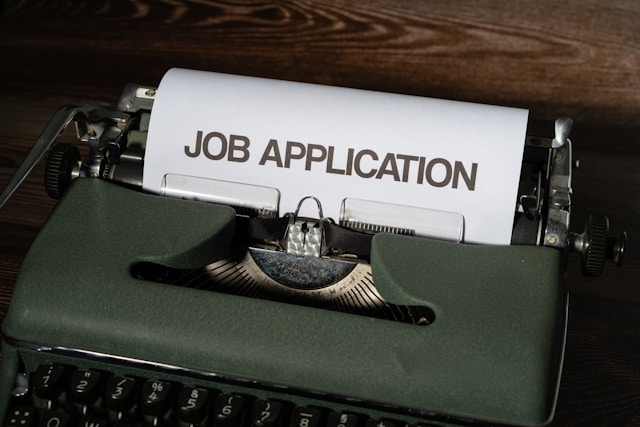Write a Resume That Gets Interviews: Proven Techniques That Work
3 minute readPublished by BNN

When it comes to landing your dream job, your resume is your first impression. A well-crafted resume doesn't just list your experience—it sells it. But with hiring managers spending as little as 6 - 8 seconds scanning each resume, how do you make yours stand out?
This guide covers actionable, proven strategies to write a resume that gets interviews in 2025 and beyond.
1. Tailor Your Resume for Each Job
One-size-fits-all resumes don't work anymore. Every job posting has specific keywords, skills, and requirements. Customizing your resume for each role shows that you've done your homework—and it helps you beat Applicant Tracking Systems (ATS).
✅ Action Tip:
Use the job description as a guide. Match relevant keywords naturally in your:
- Headline or summary
- Skills section
- Work experience bullet points
2. Start with a Powerful Resume Summary
Instead of a generic objective, start with a professional summary - a 2-3 sentence snapshot of your experience, top achievements, and value you bring to the company.
Example:
Marketing Specialist with 5+ years of experience driving digital campaigns for SaaS companies. Proven track record in increasing ROI by up to 45%. Skilled in SEO, PPC, and data analytics.
3. Use Quantifiable Achievements
Numbers catch attention and prove your impact. Instead of listing duties, highlight what you accomplished—and back it with data.
Instead of:
Managed social media accounts
Say:
Increased Instagram engagement by 120% in 6 months through targeted content strategy
Use the STAR method:
Situation, Task, Action, Result - especially helpful for performance-based roles.
4. Optimize for Applicant Tracking Systems (ATS)
Over 95% of Fortune 500 companies use ATS to filter resumes. If your resume isn't optimized, it may never reach a human.
✅ Action Tips:
- Use standard headings: "Work Experience," "Education," "Skills"
- Avoid complex formatting (e.g., text boxes, graphics, charts)
- Use common job-related keywords and phrases
5. Keep It Concise and Relevant
Recruiters appreciate brevity. Your resume should ideally be:
- One page if you have less than 10 years of experience
- Two pages max for senior professionals
Cut irrelevant details (like outdated jobs or hobbies unless directly relevant).
6. Highlight In-Demand Skills
Include technical and soft skills relevant to the job. Focus on what hiring managers are actively searching for.
Examples:
- Technical: SQL, Python, Adobe Creative Suite, HubSpot, AWS
- Soft: Leadership, Communication, Time Management, Problem-Solving
Use a mix of bullet points and integrate them into your experience section for context.
7. Use a Clean, Professional Format
Looks matter. A cluttered or overly creative resume can be hard to read or confuse ATS software.
✅ Best Practices:
- Use fonts like Calibri, Arial, or Helvetica
- Font size: 10 - 12 pt
- Clear section headers
- Consistent bullet formatting and spacing
Bonus: Use a modern resume template that's ATS-friendly (Free Template Download Available Below).
8. Include a Link to Your LinkedIn Profile (and Portfolio, if applicable)
Hiring managers often look you up online. A professional LinkedIn profile (or portfolio site) strengthens your application.
Make sure:
- Your LinkedIn info matches your resume
- Your profile photo and headline are up to date
- You have recommendations or endorsements
Final Thoughts
Writing a resume that gets interviews isn't about stuffing in every job you've ever had—it's about strategic storytelling. Focus on what makes you the best candidate for that specific role, support it with evidence, and make sure your resume is optimized for ATS and human readers alike.
FAQs
What is the most important part of a resume?
The most important parts are your professional summary and experience section - this is where recruiters look first.
Should I include a cover letter?
Yes. A personalized cover letter increases your chances of getting noticed and lets you explain why you're a perfect fit.
How far back should a resume go?
Generally, 10 - 15 years is enough unless earlier experience is highly relevant.
Ready to Create a Resume That Works?
Use these proven tips to turn your resume into an interview magnet. Still unsure? Consider using a resume-building tool or working with a career coach to polish your presentation.
Download our Basic Resume Template file here
✅ Quick Customization Tips:
Replace every [bracketed section] with your own information.
Use bullet points starting with strong action verbs (e.g., “Led,” “Developed,” “Streamlined”).
Avoid paragraphs in the experience section—use bullets for clarity.
Save as PDF (unless instructed otherwise) to preserve formatting.